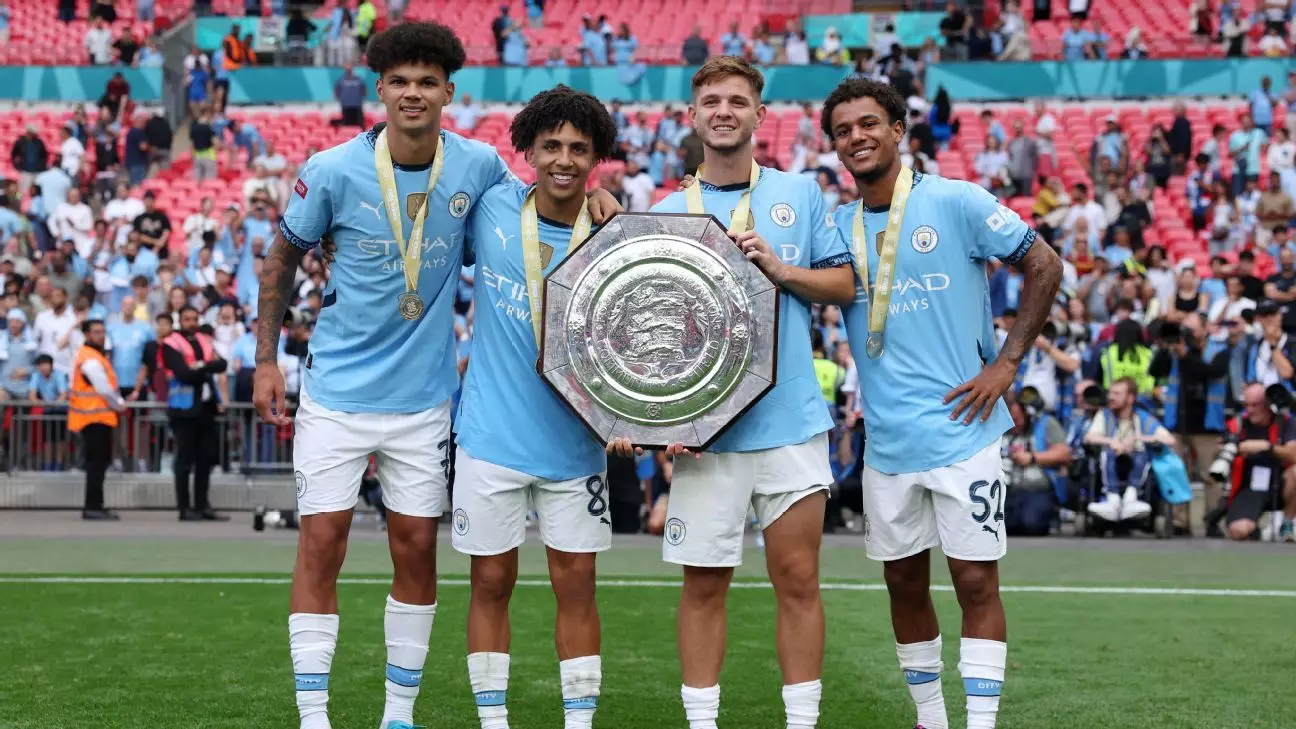The transformation of Manchester City into a footballing powerhouse is a story that resonates within the sport’s community. Before the 2008 Abu Dhabi takeover, Manchester City was seen as an underdog, grappling with the challenges of nurturing young talent amidst limited resources. Today, this landscape has markedly shifted, thanks in large part to astute leadership within the club’s youth academy. One person, in particular, Thomas Krucken, the current youth academy director, embodies this evolution. With a rich history that dates back to his days as a foundation phase coach, Krucken has witnessed firsthand the significant improvements in facilities and development opportunities for budding players.
Krucken’s experiences with past talents like Shaun Wright-Phillips and Kieran Trippier serve as a lens through which one can understand the journey Manchester City has undergone. He recalls a moment from his early coaching days when he sought to enhance training by constructing a coordination ladder using make-shift materials. This simple act illustrates the resourcefulness that characterized an era before City had access to modern training complexes.
State-of-the-Art Facilities
Fast forward to the present, and the City Football Academy (CFA) presents a stark contrast to the Platt Lane Sports Complex, where young talents once practiced. The CFA has become a sanctuary for youth development, offering cutting-edge facilities that rival the best academies in Europe. The partnership with local private schools, such as St. Bede’s College, has also elevated the academy’s profile, providing aspiring players not only with football training but a comprehensive education.
Despite the advanced infrastructure, Krucken emphasizes that the primary objective remains unchanged: to develop professional footballers. The journey from a resource-strapped cupboard to a state-of-the-art complex highlights the immense investment made in nurturing local talent, an investment that pays dividends as the club continues to produce players capable of thriving on the European stage.
The seamless integration of academy graduates into the first team marks another significant achievement for the club. Phil Foden’s meteoric rise from youth talent to English football’s player of the year demonstrates the efficacy of City’s developmental strategies. Moreover, during a recent preseason game, nine academy graduates graced the pitch, emphasizing how entrenched the youth development ethos is within the club’s culture.
Manager Pep Guardiola’s reliance on youth is not merely a coincidence; it is a calculated approach to building a cohesive team. With Guardiola’s understanding of the club’s playing philosophy, young players are prepared for first-team duties from an early age. This foresight alleviates the typical transition challenges faced by many young athletes joining a top-flight team. Players like Oscar Bobb and James McAtee have articulated how the training they receive equips them with the skills and understanding needed to step into the first team confidently.
However, the route to first-team football at Manchester City is fraught with challenges. The constant influx of high-profile signings underscores the competitive nature of football. Young prospects must consistently perform at exceptional levels to secure their positions, often knowing that an expensive new addition can swiftly alter their trajectory. For example, the significant outlay on players like Mateo Kovacic and Josko Gvardiol hints at the ever-present pressures young players face.
Krucken’s philosophy revolves not just around immediate development, but also foresight into the future of football. Preparing young players in ways that cater to emerging trends ensures that they will be ready for the evolving landscape of the sport. The emphasis on adaptability and anticipation speaks both to Krocken’s vision and the academy’s broader goals.
A Legacy of Success and Challenges Ahead
While countless players may pass through the academy, the pathway to the first team is undeniably rigorous. The expectation is exceptionally high, reflective of City’s aspirations to clinch perennial trophies, including the UEFA Champions League. Yet even those who do not make the first team often find a silver lining, as the club has mastered the delicate art of securing lucrative transfers for outcast talents.
In recent years, academy graduates have generated significant revenue for the club through successful transfers. This financial acumen ensures that the club retains the ability to reinvest in their squad without falling foul of financial regulations.
Looking ahead, both Krucken and the club’s hierarchy remain committed to maintaining the academy’s stature as a premier breeding ground for talent. The investment in nurturing young players is sure to yield further dividends, echoing through the annals of football history. As Manchester City aims to sustain its status at the pinnacle of the game, the philosophy of growth, adaptation, and commitment to excellence at the youth level stands as a testament to a visionary club prepared for the future.

